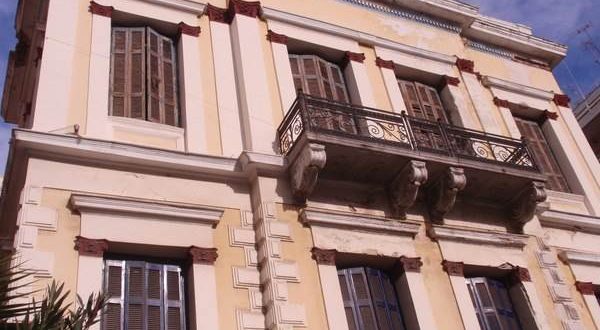These are buildings of exceptional architectural and historical value currently in ruins, empty and unused. In some cases, they are also dangerous for the safety of residents and passers-by.
An unofficial 2014 census and autopsy around Omonia Square in Athens alone identified 267 such buildings. Of these buildings in this small area, more than 1/3, 92, were abandoned, with a total area of approximately 150,000 sq.m.
The new policy text published by diaNEOSis, which is signed by the Assistant Professor of the Department of Spatial Planning, Urban Planning and Regional Development Engineering of the Polytechnic School of the University of Thessaly and a member of the advisory board of diaNEOSis Nikos Triantafyllopoulos, and resulted from research carried out with the economic support of the Onassis Foundation, focuses on the utilization of preserved buildings. It points out the rules that apply to them after their characterization and comments on the obstacles, contradictions and gaps that prevent the exploitation, the "vivification" of these buildings and, by extension, the areas where they are located.
However, the text does not stop at the findings. As is the case with most publications of diaNEOsis, it attempts to propose solutions: it formulates a documented scheme, which is based on the current legislation and follows the recommendations of international organizations to deal with the problem. If implemented, it could alleviate the situation significantly and lead to the reuse of many listed buildings.
The Agency, as stated, among other things, will have under its supervision a Fund for the Provision of Financial Aid and a Technical Service which will administratively and technically support the implementation of the projects, will issue the appropriate permits promptly and will also provide advisory services to the beneficiaries of projects and financial aid, i.e. to the owners of the buildings.
Suppose the cost for the restoration of the listed property (also considering the possible income from its exploitation) is estimated at 150,000 euros. In that case, the State should undertake the additional expenditure of 50,000 euros. In this way, i.e. by linking the income from the utilization of the building with the provision of financial assistance, the PD "enforces" the reuse of the building and assumes only the part of the cost that is related to the character of the building as a public good.
It is noted that the solution proposed by the policy text is based on Presidential Decree no. 15/28.4.1988, which institutionalizes matters decided by decision 1099/1987 of the plenary session of the Council of State. With this decision, it was recognized that listed buildings have elements that classify them as public goods. The decision also acknowledges that, as long as the deterioration of the buildings has not been caused intentionally, the State must cover all or part of the related expenditure when it exceeds a "reasonable limit".















